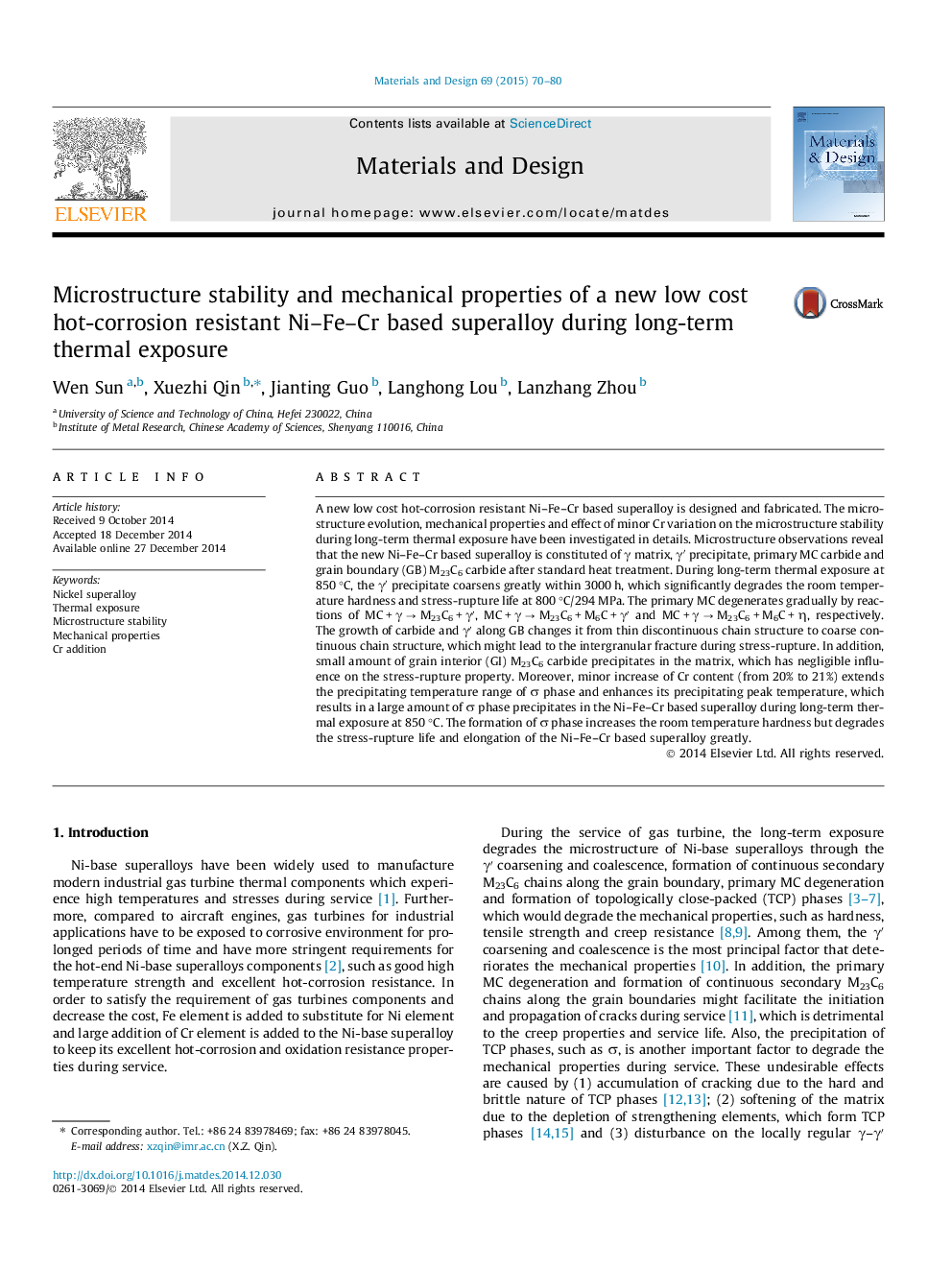| کد مقاله | کد نشریه | سال انتشار | مقاله انگلیسی | نسخه تمام متن |
|---|---|---|---|---|
| 828692 | 1470328 | 2015 | 11 صفحه PDF | دانلود رایگان |
• A new hot-corrosion resistant Ni–Fe–Cr superalloy is designed and fabricated.
• γ′ precipitate coarsens greatly within 3000 h during thermal exposure at 850 °C.
• The γ′ coarsening degrades hardness and stress-rupture life significantly.
• Minor increase of Cr (from 20% to 21%) promotes large amount of σ precipitation.
• The σ phase enhances hardness but degrades the stress-rupture properties greatly.
A new low cost hot-corrosion resistant Ni–Fe–Cr based superalloy is designed and fabricated. The microstructure evolution, mechanical properties and effect of minor Cr variation on the microstructure stability during long-term thermal exposure have been investigated in details. Microstructure observations reveal that the new Ni–Fe–Cr based superalloy is constituted of γ matrix, γ′ precipitate, primary MC carbide and grain boundary (GB) M23C6 carbide after standard heat treatment. During long-term thermal exposure at 850 °C, the γ′ precipitate coarsens greatly within 3000 h, which significantly degrades the room temperature hardness and stress-rupture life at 800 °C/294 MPa. The primary MC degenerates gradually by reactions of MC + γ → M23C6 + γ′, MC + γ → M23C6 + M6C + γ′ and MC + γ → M23C6 + M6C + η, respectively. The growth of carbide and γ′ along GB changes it from thin discontinuous chain structure to coarse continuous chain structure, which might lead to the intergranular fracture during stress-rupture. In addition, small amount of grain interior (GI) M23C6 carbide precipitates in the matrix, which has negligible influence on the stress-rupture property. Moreover, minor increase of Cr content (from 20% to 21%) extends the precipitating temperature range of σ phase and enhances its precipitating peak temperature, which results in a large amount of σ phase precipitates in the Ni–Fe–Cr based superalloy during long-term thermal exposure at 850 °C. The formation of σ phase increases the room temperature hardness but degrades the stress-rupture life and elongation of the Ni–Fe–Cr based superalloy greatly.
Journal: Materials & Design - Volume 69, 15 March 2015, Pages 70–80
